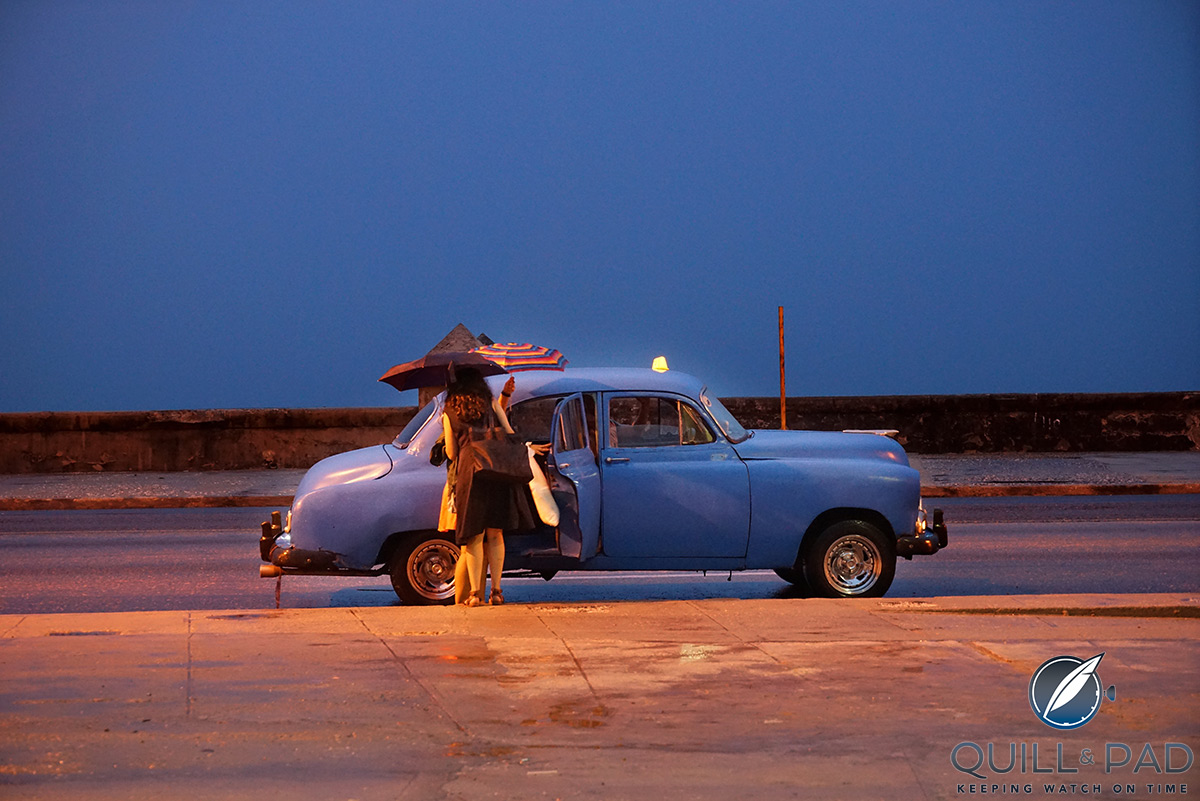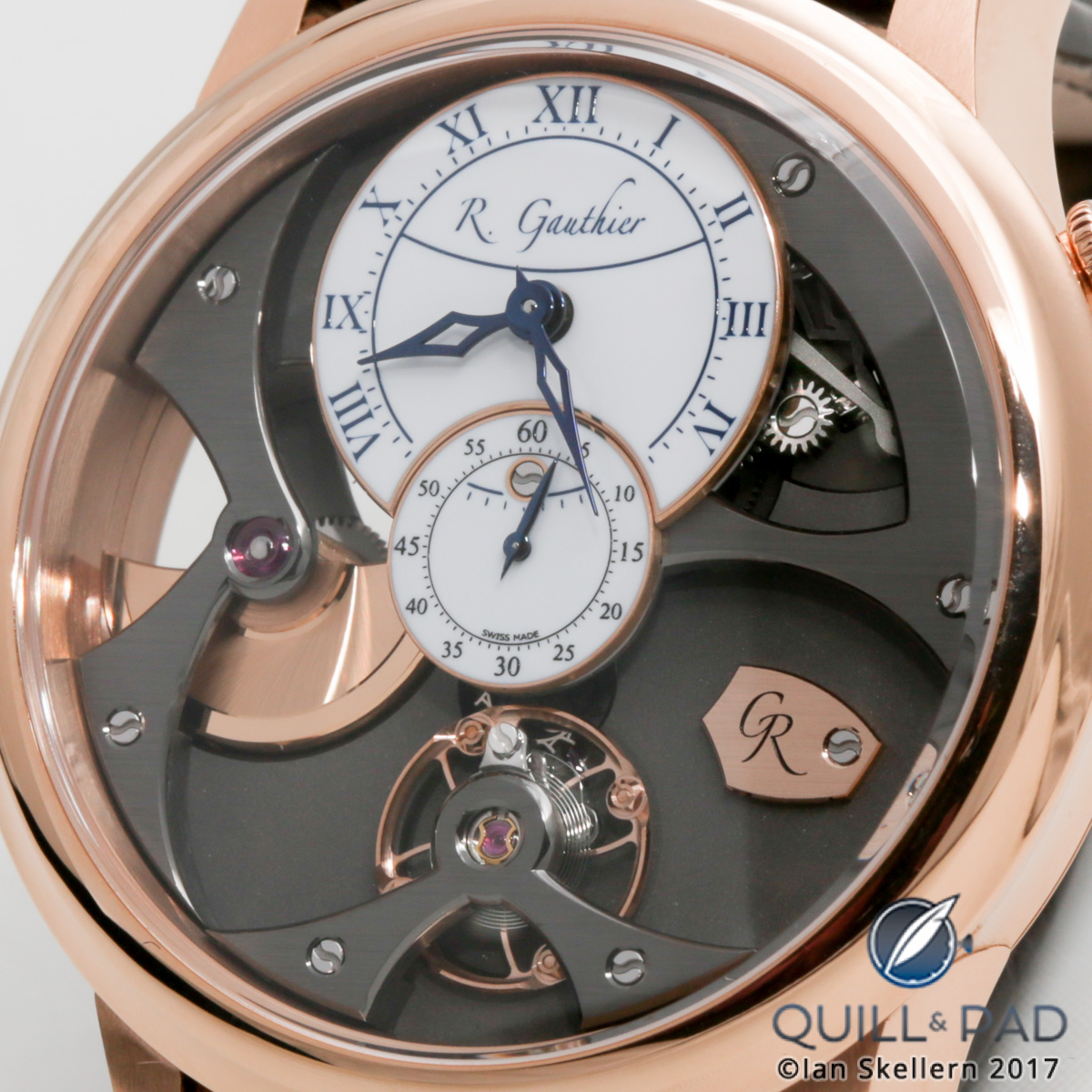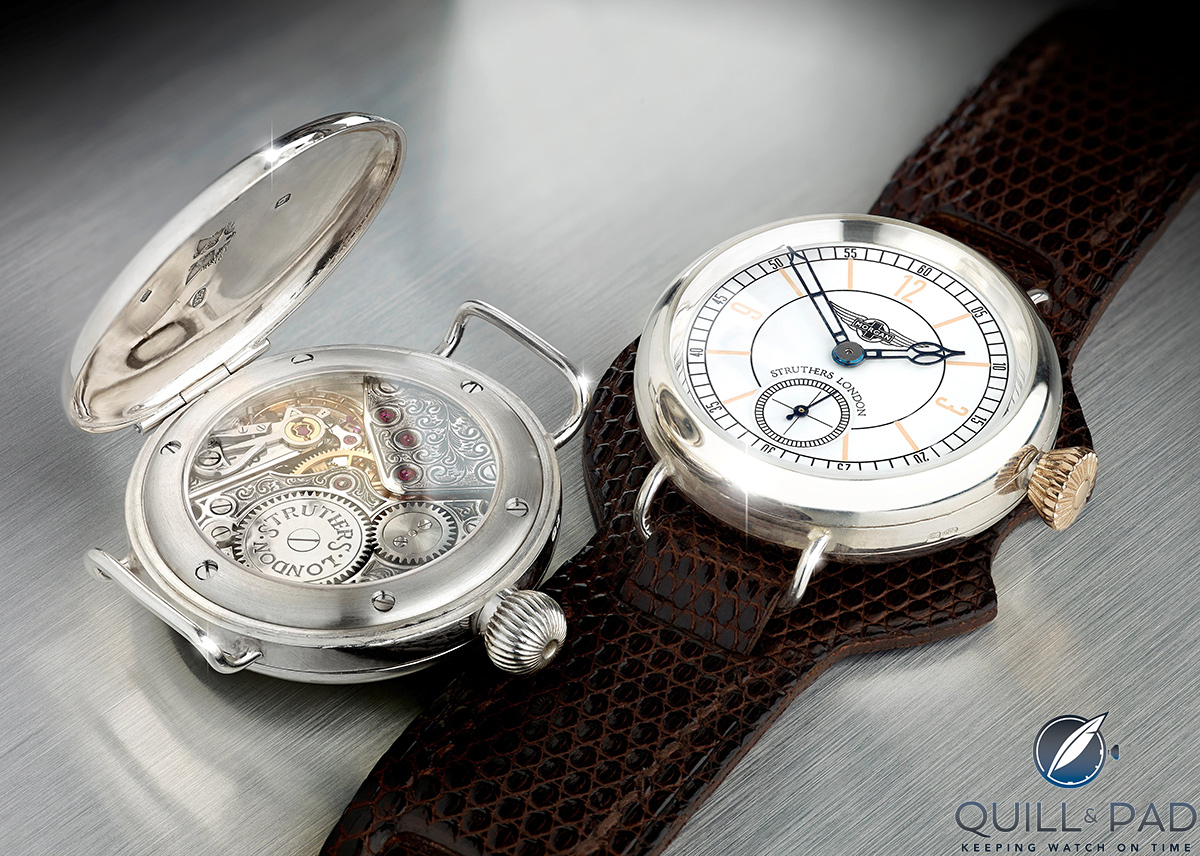
When you walk into the Struthers’s Birmingham workshop, you feel like you could be stepping a century back into the history of horology. Until you spy a few of Rebecca Struthers’s tattoos, that is.
And then you know you are in the here and now.
And that’s a good thing.
Because a century ago, Dr. Rebecca Struthers would never have been able to achieve the incredible first that she has just accomplished: she has been awarded the very first PhD in the history of horology.
The “el primero” of horological doctorates, so to speak.
The first doctorate in watchmaking in the entire history of watchmaking.
That’s a pretty big thing.
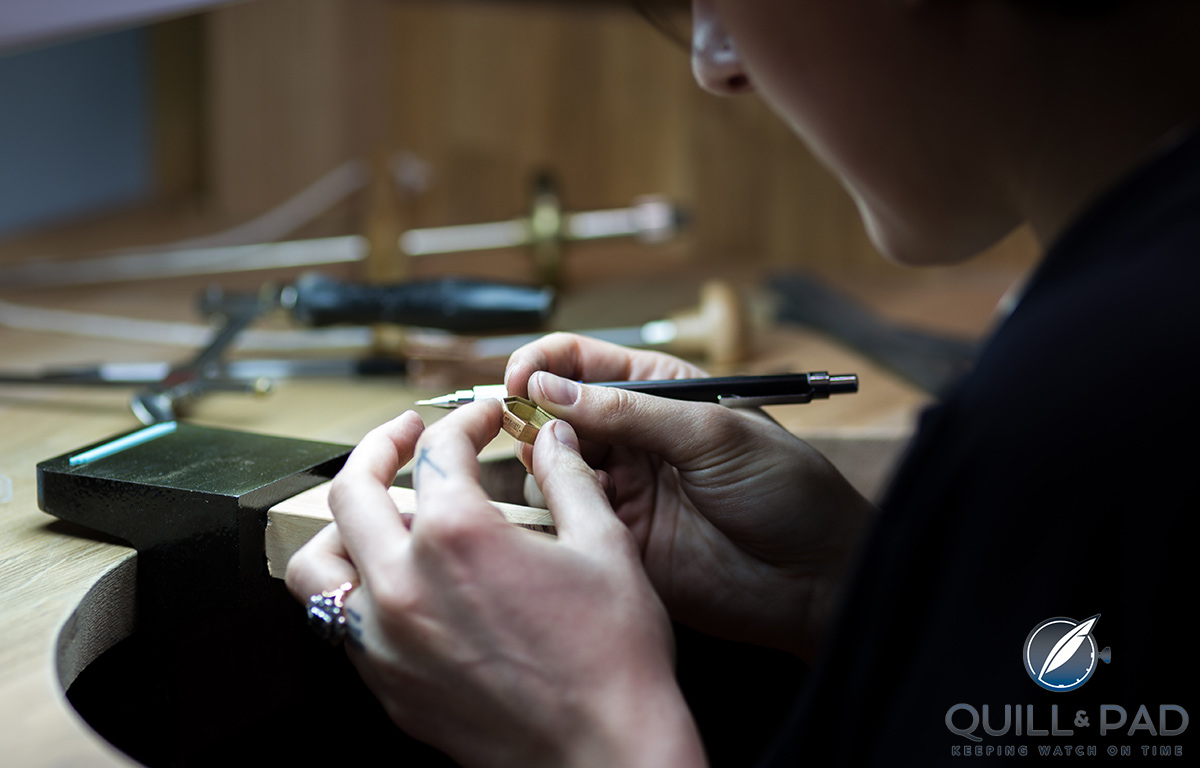
Rebecca Struthers where she is most comfortable: at the bench (photo courtesy Georgina Cook)
Rebecca who?
Now just 30 years of age, that Struthers got into watchmaking at all was a stroke of luck – but then, as Walter Lange always said, without that little pinch of luck, nothing really ever succeeds.
“I’d never actually heard of watchmaking until I was at university studying to be a jewelry silversmith, and it was there I kind of got interested in it,” Rebecca explained when I went to visit her in Birmingham, England in 2016.
“I made a final project with an orrery, and all the planets were jewelry,” she continued before explaining that what made it really interesting was that the owner could take each planet off and wear them as individual pieces of jewelry and then put them back into the orrery when finished – that’s about as unique a piece of jewelry art as I have ever heard described.
“And I actually got spotted by the horology students, who saw what I was doing,” she continued in her reserved manner. The horology students thought it was “really cool” and queried aloud as to whether she had “thought about doing watchmaking.”
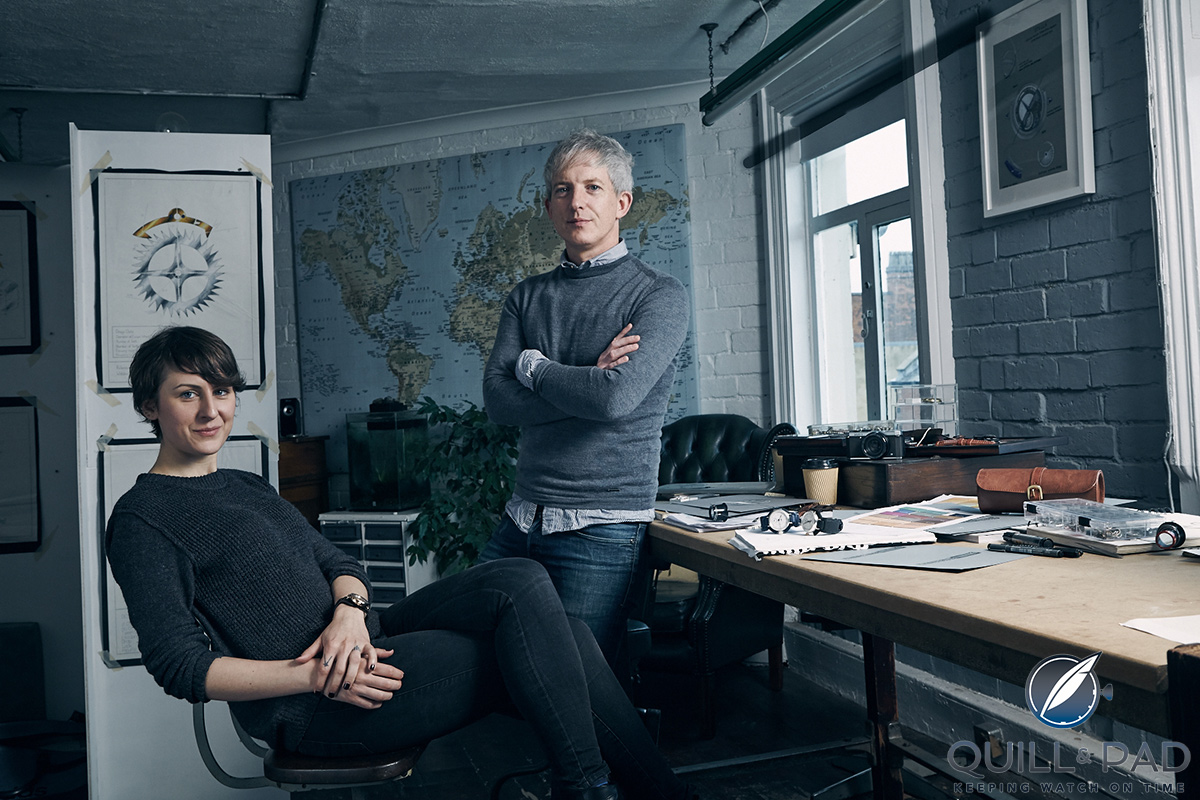
Rebecca Struthers and Craig Struthers in their Birmingham workshop (photo courtesy Mark Salmon)
Rebecca now admits she wasn’t even aware that watchmaking could be a profession, but when she looked into it at the age of 17, she fell in love with it. “I thought, this is me; this is everything I want. But I kind of struggled: when you’re at school, you’re kind of taught art and science are two separate things and you can never combine them. And watchmaking was the first time I thought, wow, I can be an engineer and a physicist and an artist and a designer all at the same time!”
At the time she began her watchmaking course, it was vocational at the British Horological Institute; she continued her two-year courses in jewelry and silversmithing while finishing her three years in watchmaking there. After completing that, she continued with a master’s degree and diamond grading course before being awarded a studentship in 2013 from the Arts and Humanities Research Council to continue researching at PhD level. She had been working at postgraduate education in horology when that took place.
During this time, she also worked successively at Fellows & Sons and Bonhams in restoration.
The PhD
To Rebecca’s knowledge (and to mine), a doctor title in horology has never been achieved by anyone before. This is big news even if she seems quite laid back when people react as I did with copious amounts of simultaneous surprise and respect.
“It’s been really overlooked as an academic subject,” she says.
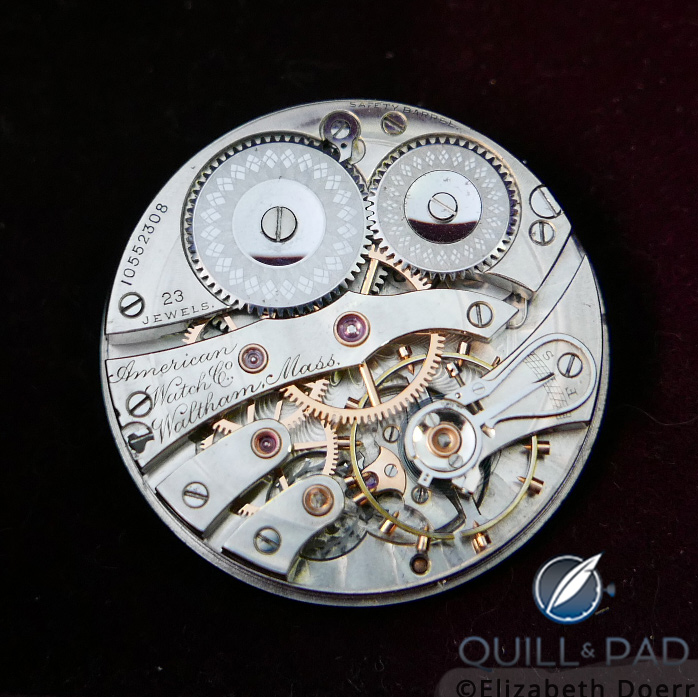
A refurbished historical Waltham movement at the Struthers workshop
Rebecca is a visiting lecturer in horology at Birmingham City University, the very first female horology lecturer there in history. This educational institution recently released a statement written by Rebecca on the subject of her doctoral research. It goes like this.
“I recently completed a PhD examining a very peculiar type of watch that first starts appearing in the mid-eighteenth century. It all started when I was working at an auction house in the Jewelry Quarter (Fellows & Sons) whilst studying my MA History of Art and Design at Birmingham City University’s School of Art back in 2008.
“Whilst cataloguing some antique watches I came across one made in around 1760 that, despite being signed as London-made, looked completely unlike the London watches I was familiar with. When I looked up the name of the maker, “John Wilter,” the reference book simply listed him as “perhaps a fictitious name.” I did a bit more research and it soon transpired that this was pretty much all we knew about the most prolific type of watch forgery in the eighteenth century.
“The emergence of these ‘knock-off’ London watches, together with economic pressures, spelled disaster for the genuine London industry that fell into a state of depression from which it would never recover. Back in the 1700s it was England, particularly London, that was home to the world’s most famous watchmakers, and watches made in the city commanded a premium. By the mid-1700s we started to see watches appearing of a much lower quality than the fine London work, in a style different to that of the English watchmakers, and signed with spurious names for which there is usually no trace they existed as real people; let alone watchmakers.
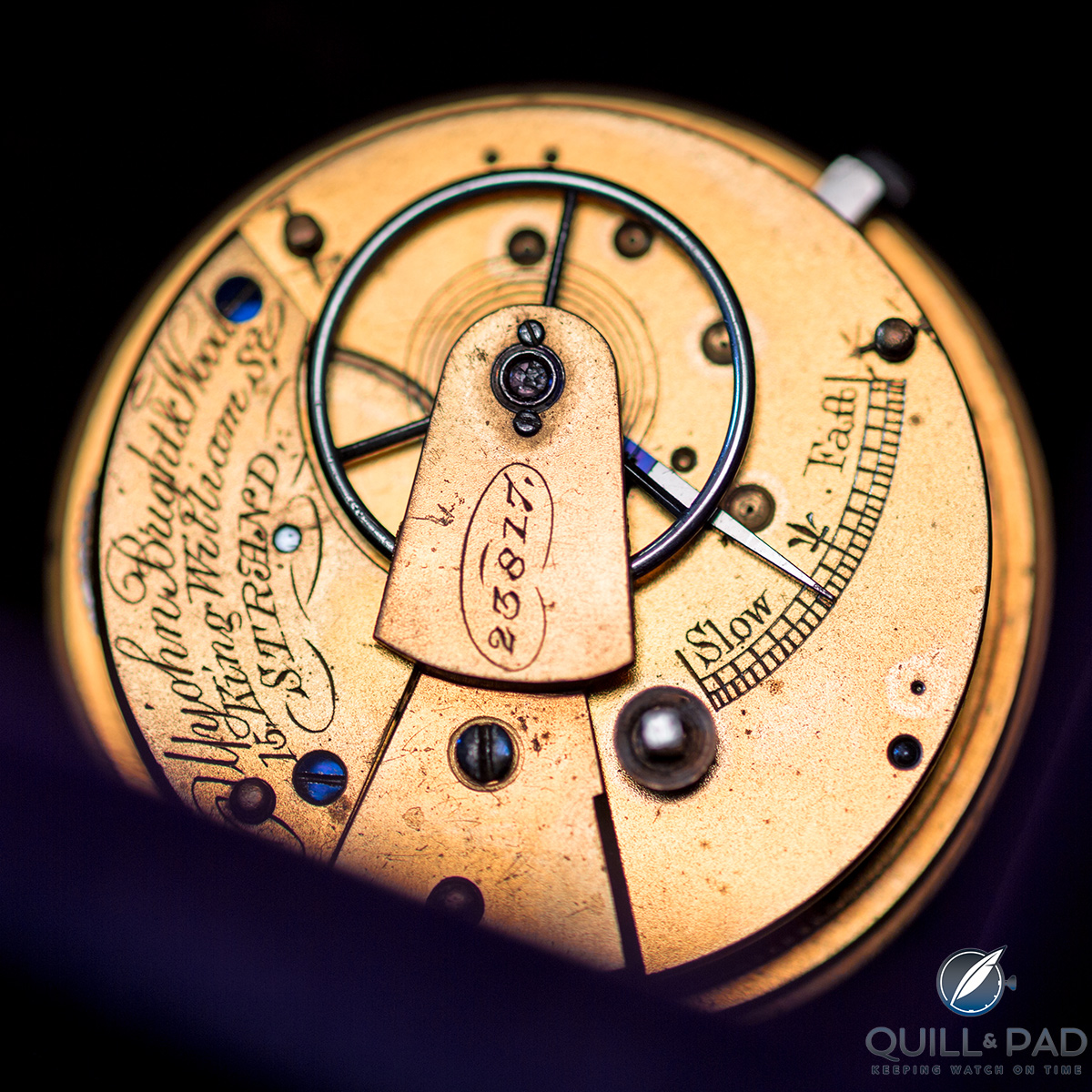
A historical English movement awaiting refurbishment at the Struthers workshop (photo courtesy Georgina Cook)
“I studied a group of 30 of these watches that survive to this day in the collection at the British Museum and studied them in forensic detail, following them back through time and across Europe to find out who was really making them and where they were being made. My research brings the commonly accepted date for the birth of mass production of watches forward by nearly 100 years and will change the way many people view the watch industry as it stands today. It would appear that they originated from manufactories along the Swiss-French border in towns and cities that are still home to many of the famous watch brands we know of today.
“The Swiss watch industry as we know it today was, in many ways, founded and financed at its beginning by imitating English watches. In an act of bitter irony, one of the greatest challenges the Swiss industry faces today is imitation of its watches in the Far East, a threat that costs the luxury watch market billions of dollars. In 2013, Richemont was awarded $100 million in damages caused by online sales of fake goods through internet retail platforms like Alibaba and Taobao. Luxury goods manufacturer Coach was awarded $257 million in a similar case that same year.
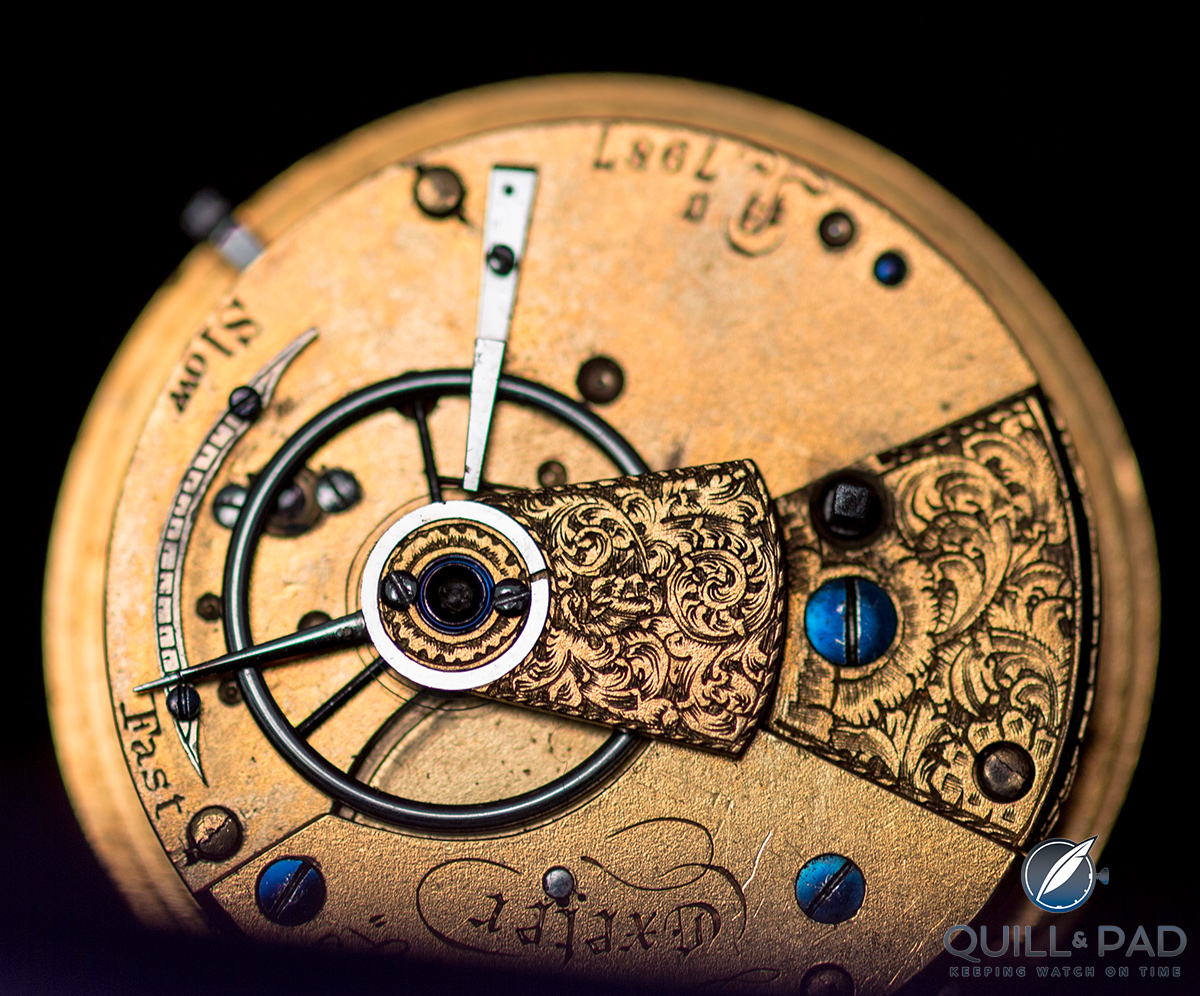
A historical English movement awaiting refurbishment at the Struthers workshop (photo courtesy Georgina Cook)
“Add this to the challenge of an increasingly volatile global market; could change be in the water again? Could the Far East be about to take the title of the world’s center of watchmaking using a very similar strategy to that implemented by the Swiss over two centuries ago? At the same time, British watchmakers have been making a comeback. Could the industry be about to return to the UK?”
Though her PhD could be considered icing on the educational cake, I will boldly assert that such über-qualification is almost what’s needed to break the glass ceiling of the horological world in a noticeable way. Even today.
And in a way, it is this that has driven Rebecca, who became the inaugural Eve’s Watch Awards’ first woman of the year in 2016, to become what she now is: the most qualified watchmaker on the planet with certified training as a jeweler, silversmith, watchmaker, and gemologist as well as a master’s degree in the history of art and design, which she tailored to antiquarian horology as no such specialist course existed in the United Kingdom at that time.
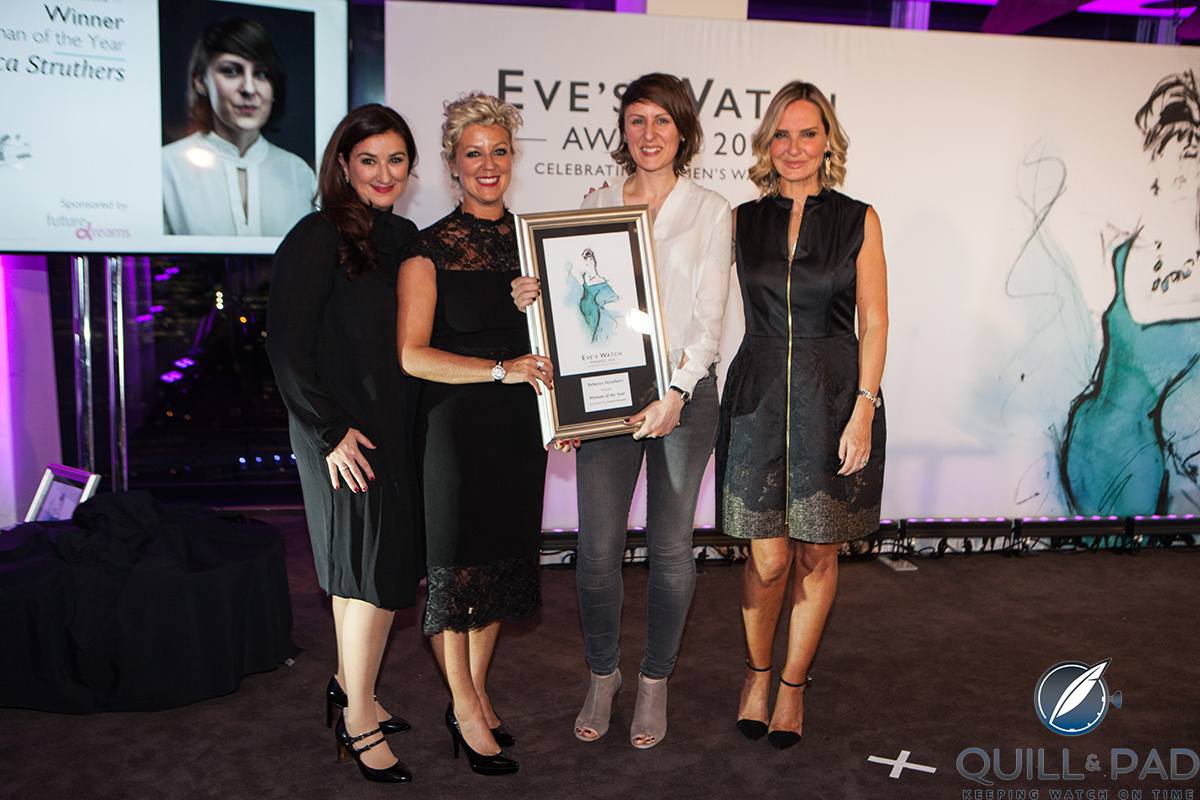
Jane Trew, Larissa Trew, Rebecca Struthers, and emcee Jacquie Beltrao at the inaugural Eve’s Watch awards in 2016, where Rebecca took home “woman of year”
“Being told the workshop isn’t a place for women just motivated me to prove people wrong,” she says with almost no perceptible change in emotion. This is her reality, one that she has the will to change with action instead of words.
And luckily for the watch world, Rebecca does not plan on heading into the corporate side of watchmaking, so both her actions and her words can remain entirely her own.
Craig Struthers
They’re a team: master watchmaker Craig Struthers and Dr. Rebecca Struthers, DGA MA FRSA, visiting lecturer at Birmingham City University, and chairperson of the wristwatch group of the Antiquarian Horological Society.
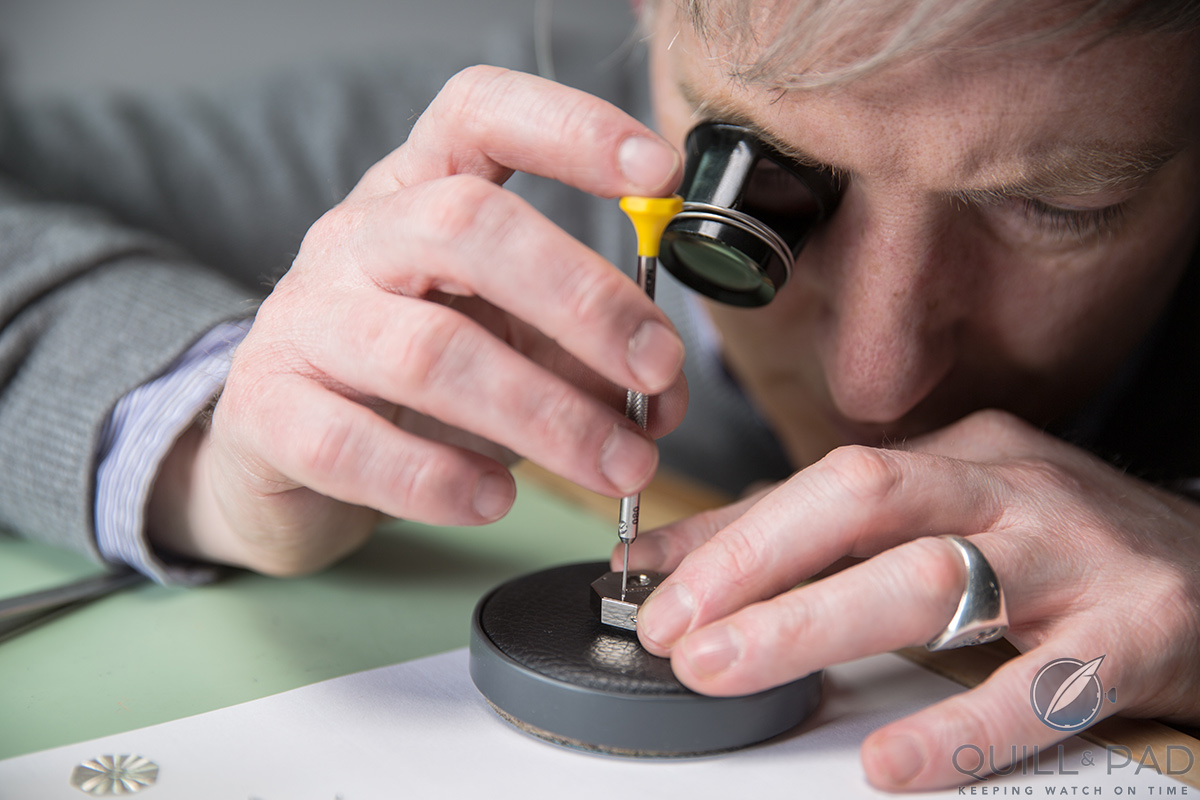
Craig Struthers (photo courtesy Georgina Cook)
That he seems to be positioned slightly in the periphery of the crown jewel that is his wife doesn’t seem to bother him in the least. I feel that he understands how unique Rebecca’s accomplishments are and supports them fully.
And it’s hard to shine like a diamond when you’re always next to the crown jewel – but he does a darn good job of it anyway.
Having met in 2004 while training as watchmakers at the Birmingham Institute of Art and Design, Craig’s reserved manner not unsurprisingly matches Rebecca’s similarly low-key demeanor. A fellow of the Royal Society of Arts, Craig – whose great love is the vintage watch – also holds a master’s degree in art and design.
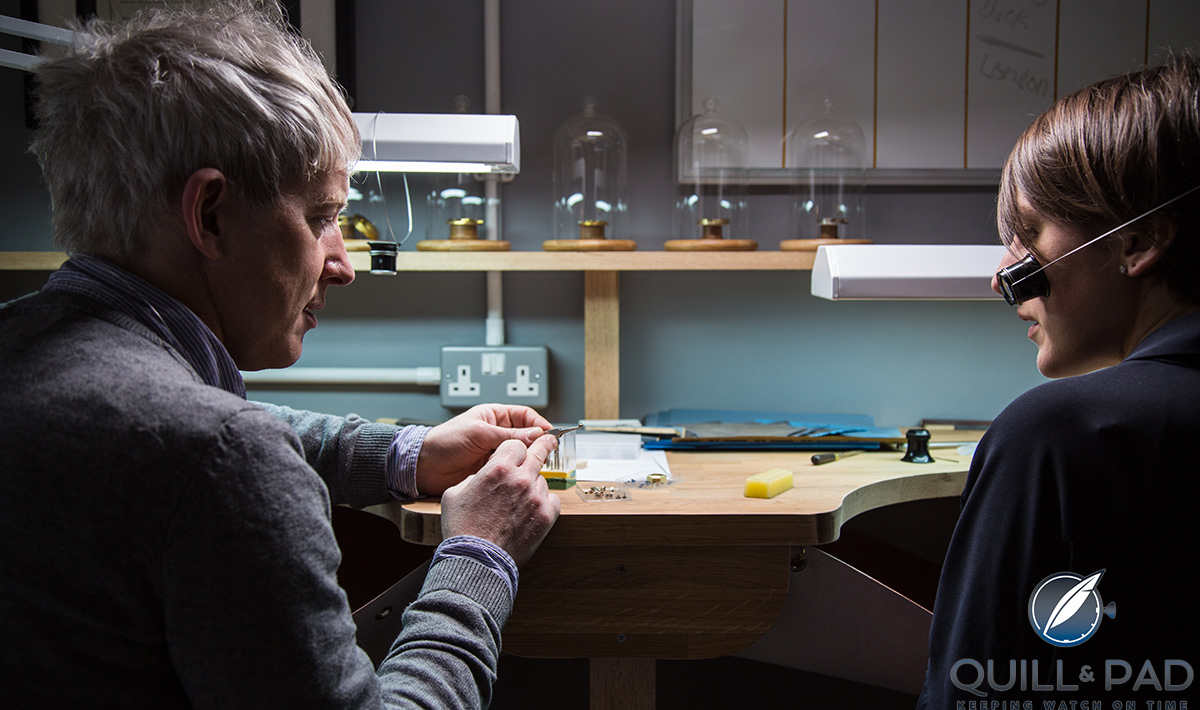
Husband-and-wife team Craig Struthers and Rebecca Struthers work side by side day and night (photo courtesy Georgina Cook)
The workshop
Walking into their Birmingham workshop is almost like taking a step back into another era.
This workshop located in Birmingham’s famous Jewelry Quarter is now located in one of James Watt’s old factory buildings, where Deakin & Francis, the cufflink manufacturers, are also at home. “They’ve been here since 1786, so it’s a lovely old building with a lot of character,” Rebecca describes it.
“That jig borer is, what, from the 1940s?” Rebecca casually points out a piece of machinery. “It was used for making Spitfires.”
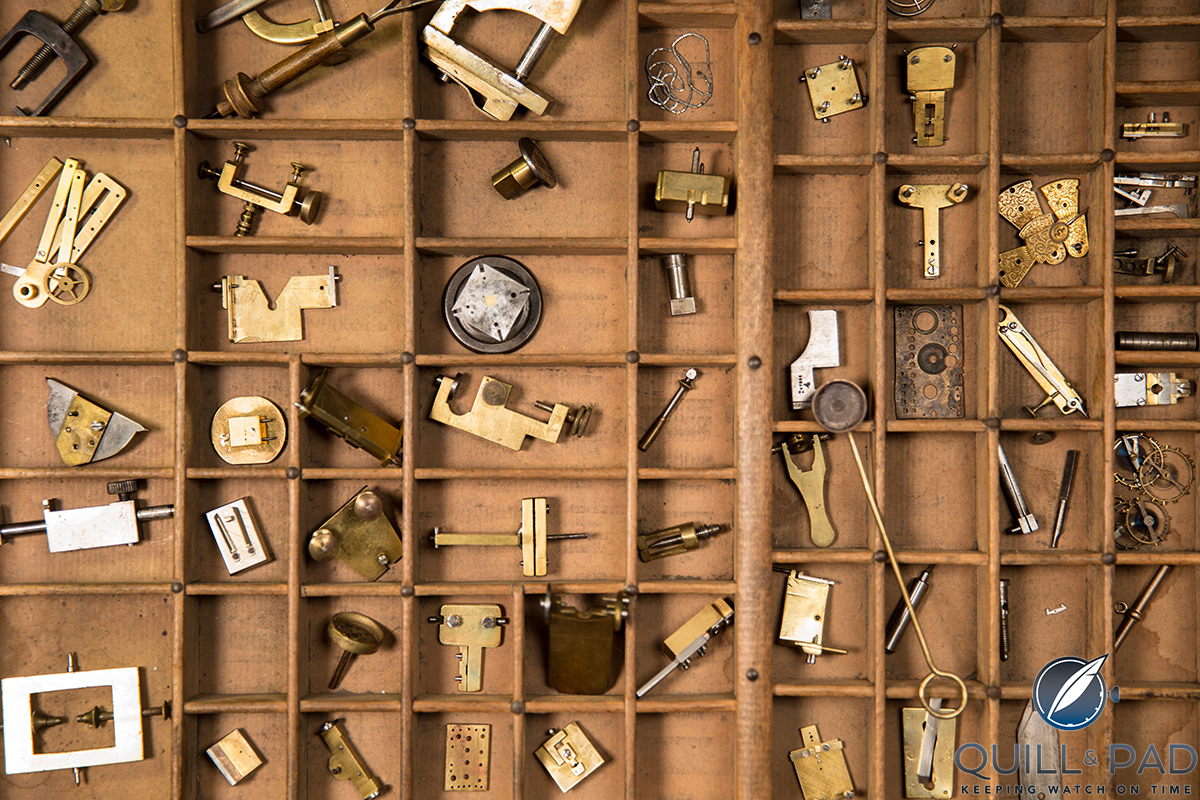
The Struthers’s workshop is a veritable treasure chest filled with the old, ancient, and even older (photo courtesy Georgina Cook)
“If I’m honest, and this is the wrong thing to say, I just can’t get a passion about modern watches,” Craig admits a bit sheepishly.
“I think it’s alien to me. But my passion, originally, was obviously for old stuff . . . what some people call junk, to me it’s like magic. Does that make sense?”
Inspired Struthers watches
Naturally, as trained vintage and antique watch restorers, the Struthers are happy to restore the horological treasures that their customers bring them. But their favorite projects are the tailor-made, bespoke creations they think up together with their clients.
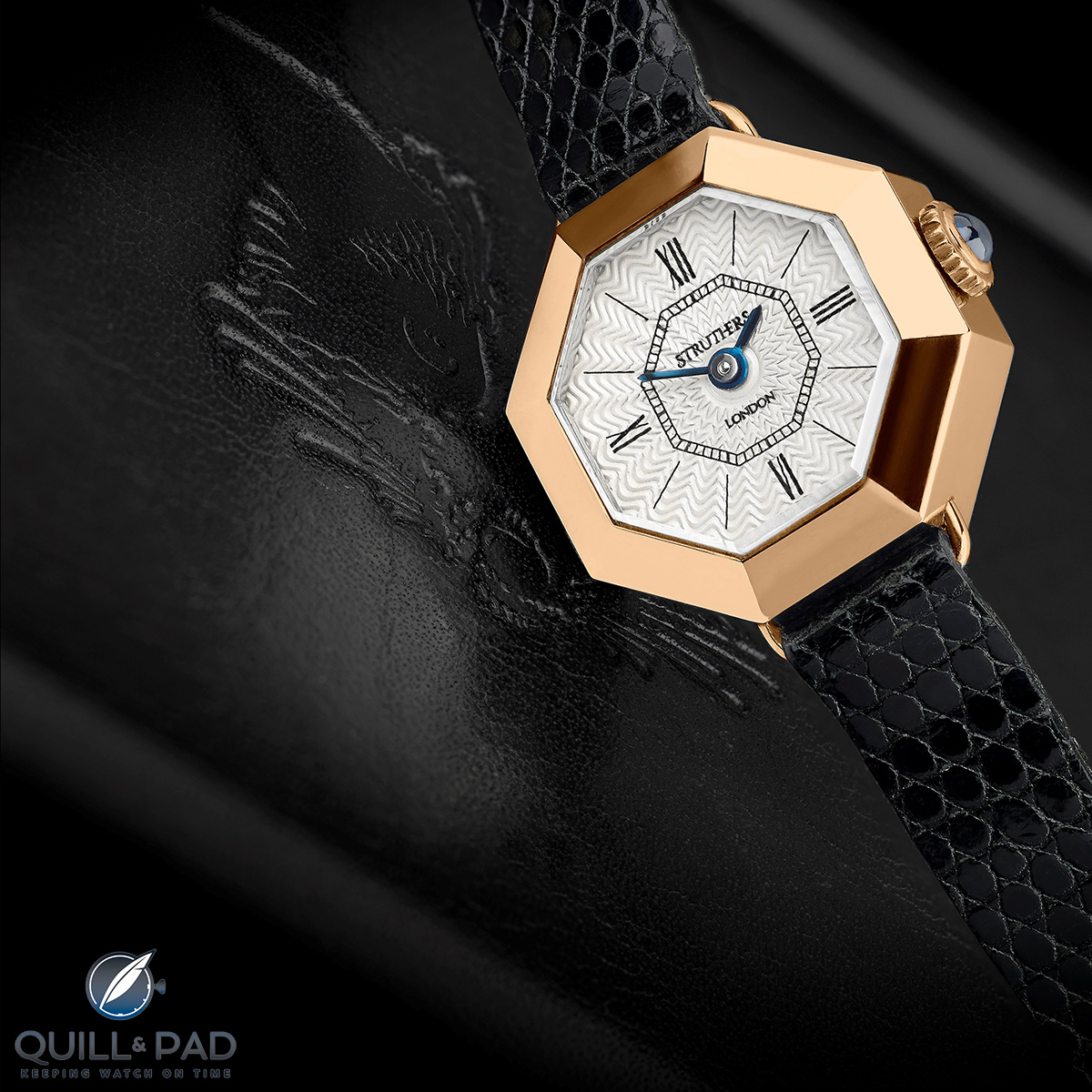
The petite 20 mm octagonal Kelso is a Struthers base watch for the pair’s tailor-made program that is available in white, yellow, or pink gold with a refurbished vintage mechanical movement; prices here start at £16,500
The Struthers tailor-made program starts with a base watch style and allows the client any sort of customization that is desired.
The bespoke program, on the other hand, sees the client intimately working with Craig and Rebecca to design a watch from scratch.
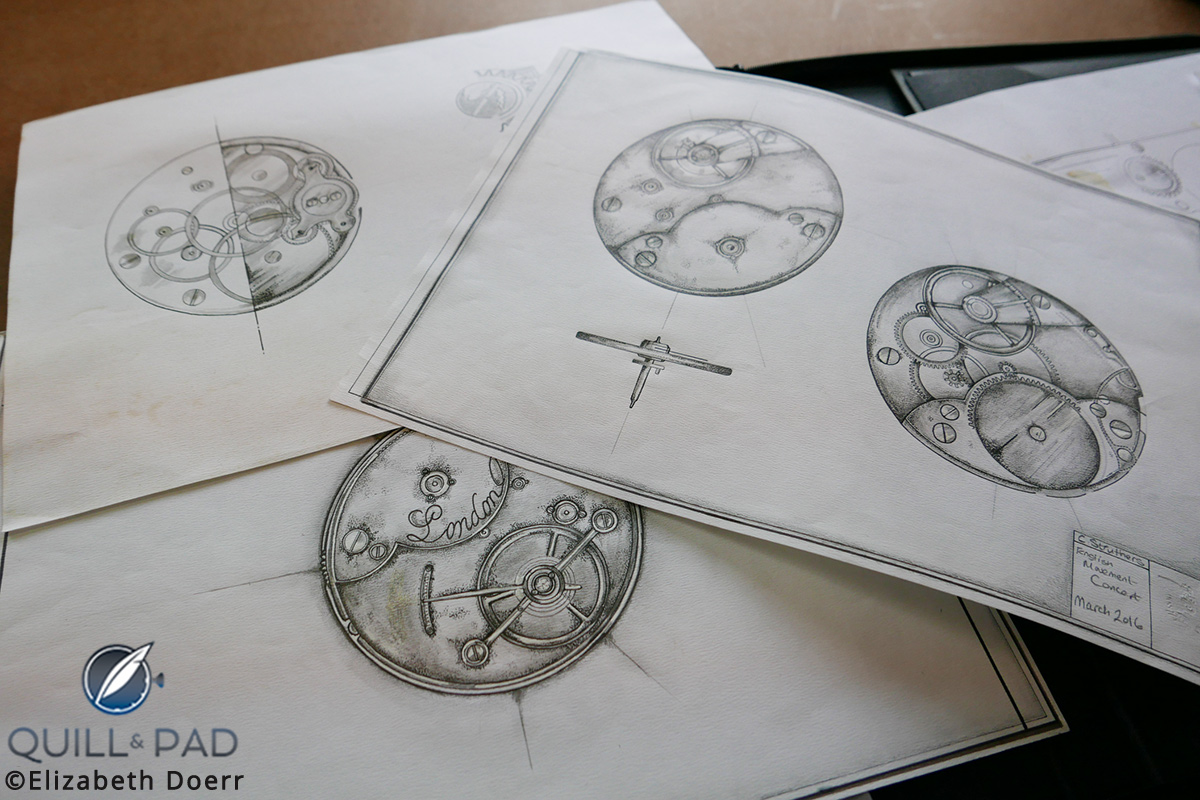
Drawings for the beginnings of a bespoke project at the Struthers workshop
“Our customers like the handmade stuff and they like that it’s so personal as well,” says Rebecca. “We do this service where we literally design a watch for the client from drawings and then create it. They kind of get to join us on this journey, which can take anywhere up to two years, and that’s even doing a refurbished movement. At the end of it, we do a photo build book so they can follow the story, the bench, the watch coming to life, and they have this whole memory attached to it, and that sentiment you just can’t get from an instant purchase. People really appreciate that. We’ve had a few people cry.”
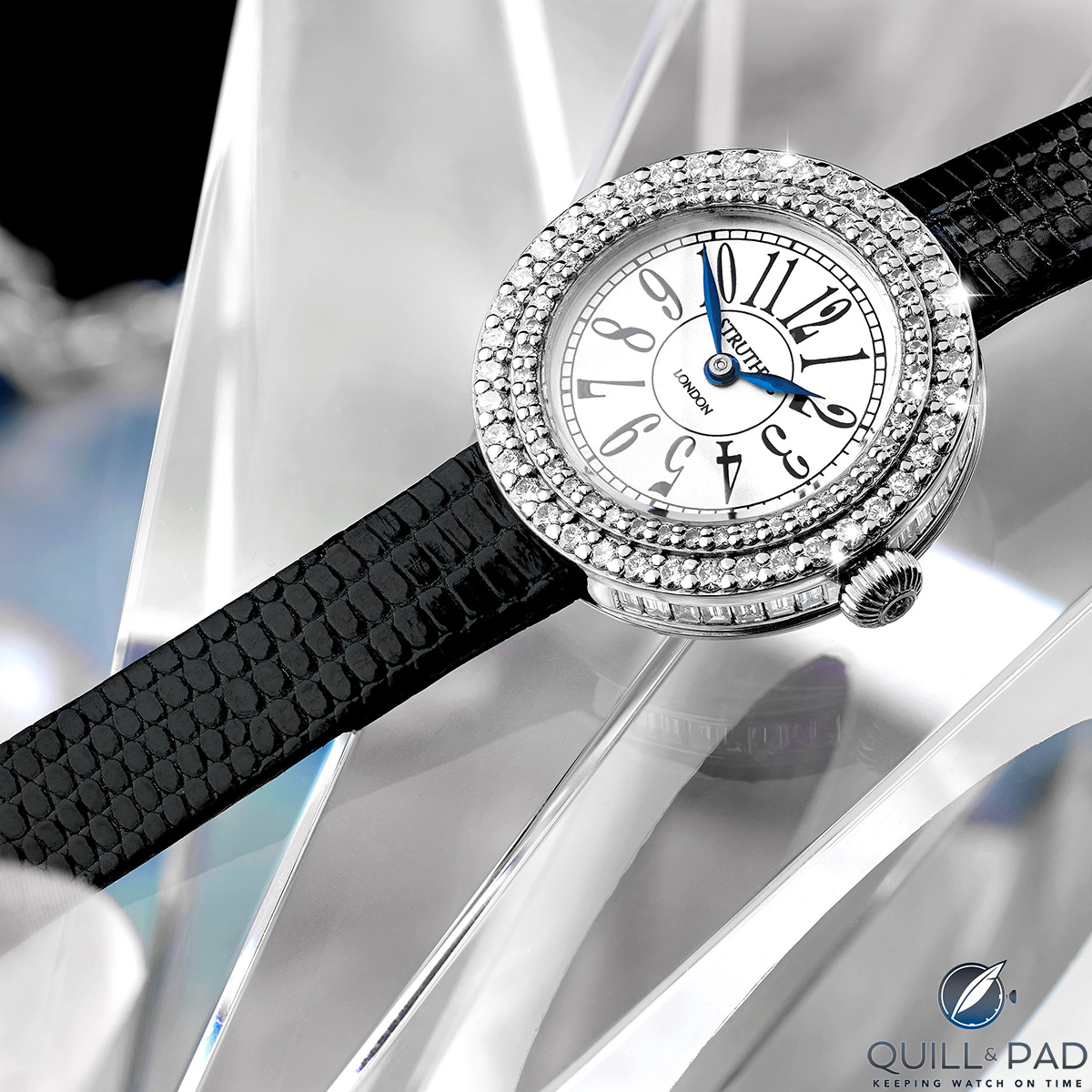
The Struthers Polly: this is a bespoke watch project powered by a refurbished IWC Caliber 96 from the 1940s that began with 118 diamonds from a pair of the client’s earrings
The pair, who founded Struthers London in 2013 (Craig is originally from London, while Rebecca was born and bred in Birmingham), often find inspiration and movements among the scrapped watches and fragments they rescue from bullion traders, who have taken them apart to sell for their scrap gold or silver.
“I think inspiration is the biggest thing [when it comes to these old watches] . . . how they made them, it’s better than reading through a book!” Craig only half-jokingly says as the pair shows me seemingly thousands of old movements in drawers all over the workshop.
“I know that I’m not going to do anything with most of them in those drawers, but I can’t help myself, I don’t know what it is, I just feel like I’m rescuing them. But I’m a hypocrite because I know I’ll never be able to make pieces for them.”
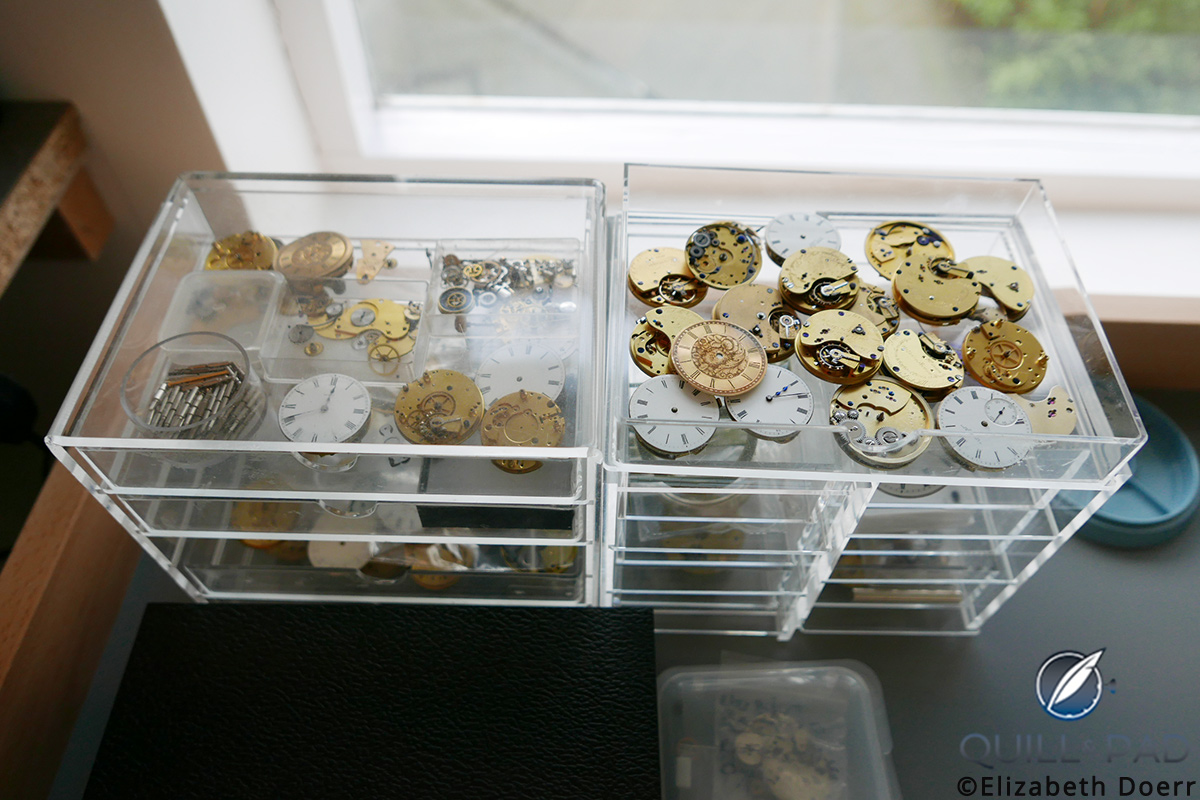
Treasure rescued from scraps at the Struthers workshop
“I love the old mechanisms, in some ways they’re quite crude,” Craig continues. “If you finish them properly, they’re just beautiful, really. There’s so many different ways of doing the same thing, but I just love the old ways.”
“If you look at, say, an old Tompion that is over 300 years old, the finish of the steel will be so good, it’s still immaculate, it’s still a mirror finish, and it really reminds you of why we should be doing that now, for longevity,” Rebecca interjects. “We want to make stuff that’s going to last, so seeing that kind of heritage and how different materials and different techniques age definitely goes into everything that we do.”
The future, not so far away
While their basic concept is to make bespoke pieces using vintage movements, the couple got a taste of what it’s like to create their own collection when they went into partnership with Morgan Motors on two styles of limited edition retro trench watches in 2014.
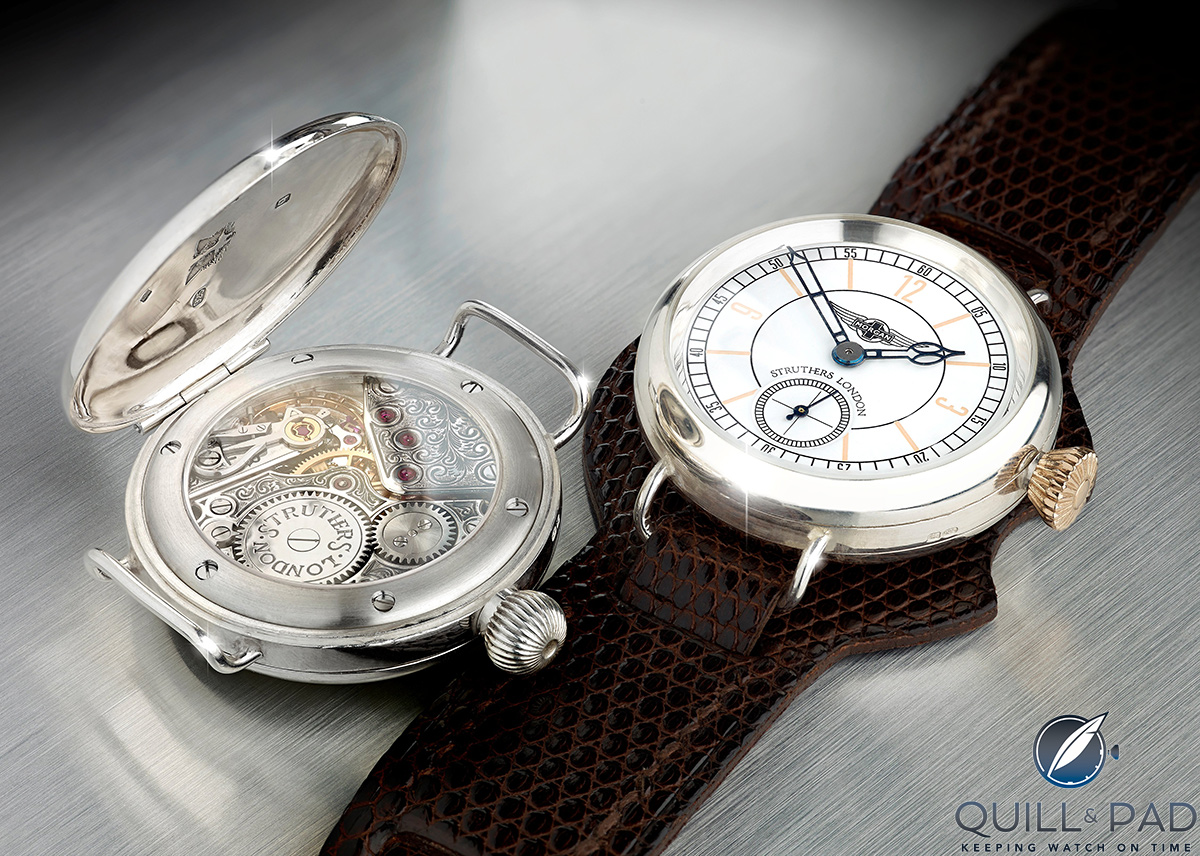
The Struthers for Morgan Motor Company retro trench watch with refurbished vintage Omega 26 series movement
These attractive timepieces powered by 1950s/1960s Omega 26 series movements are hand-built upon order. And because this is so, each watch can be modified as the client desires.
But the bigger news is the base movement they have been working on for years, which is now due to be shown in spring 2017.
“Then, hopefully, we will have that into an actual watch by the end of 2017. That is the plan,” explains Rebecca.
“But it’s not an amazing tourbillon, obviously,” Craig is quick to add in his modest manner. “Basically, I’ve looked at what inspires me and what I can make; it’s realistic and it’s pretty humble.”
“It’s low-fi,” Rebecca quips.
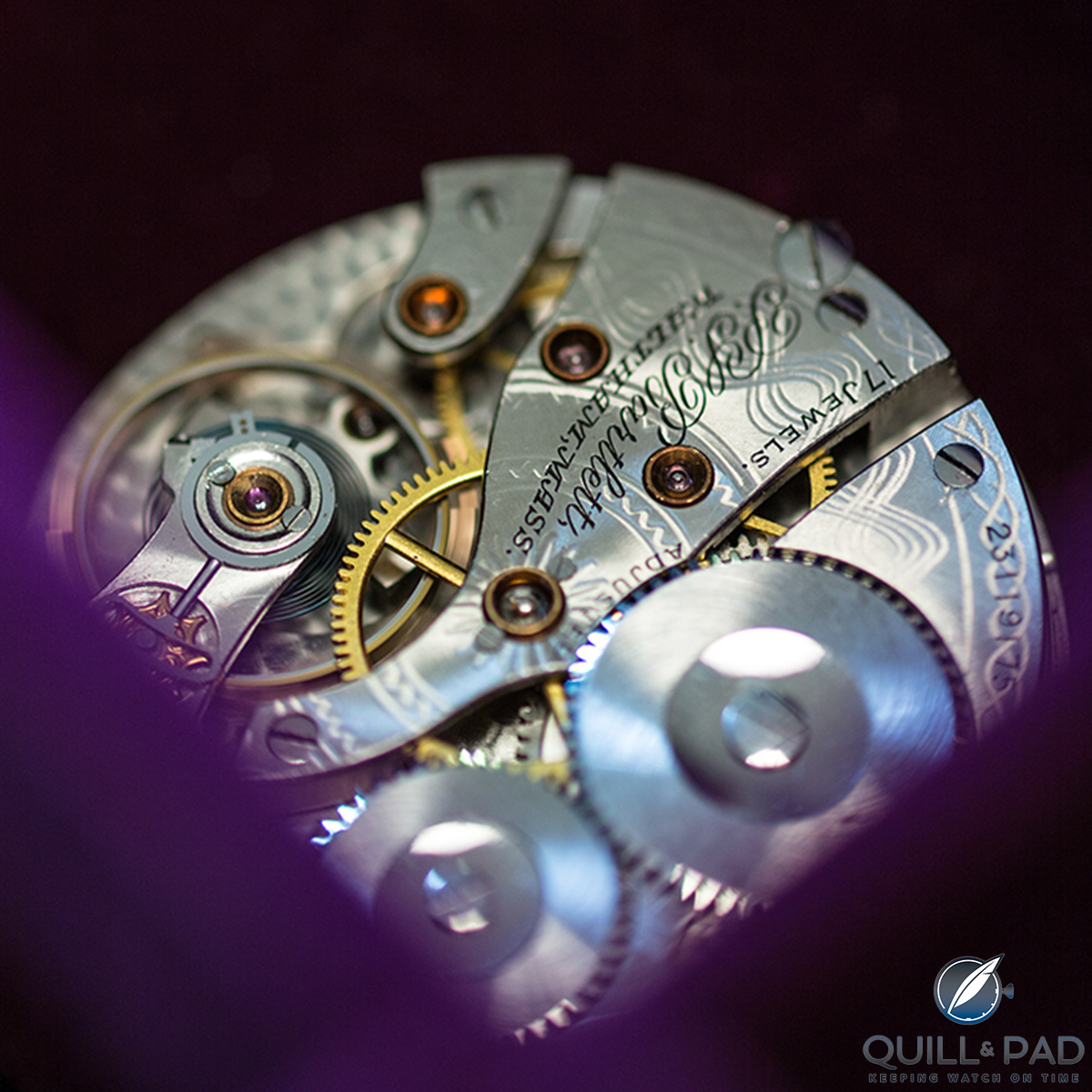
A refurbished vintage movement at the Struthers workshop (photo courtesy Georgina Cook)
This new base movement is inspired by an English watch from the late 1800s, that much I was able to get out of the pair. And they’re even using original period tools to make it.
“We kind of wanted to go back to where the English left off, when our industry died out, and to kind of pick up from there and do our own thing,” Rebecca makes it clear that the inspiration for this obviously comes from her own doctoral research.
“We didn’t want to just be another one of those trying to make their own in-house movements, but they end up looking like Swiss movements.”
“It’s about getting back to the basics and getting the base right, and if you get that base right, then you can start looking at complications, then you can start looking at making it automatic, then you’ve got something that you can grow from.”
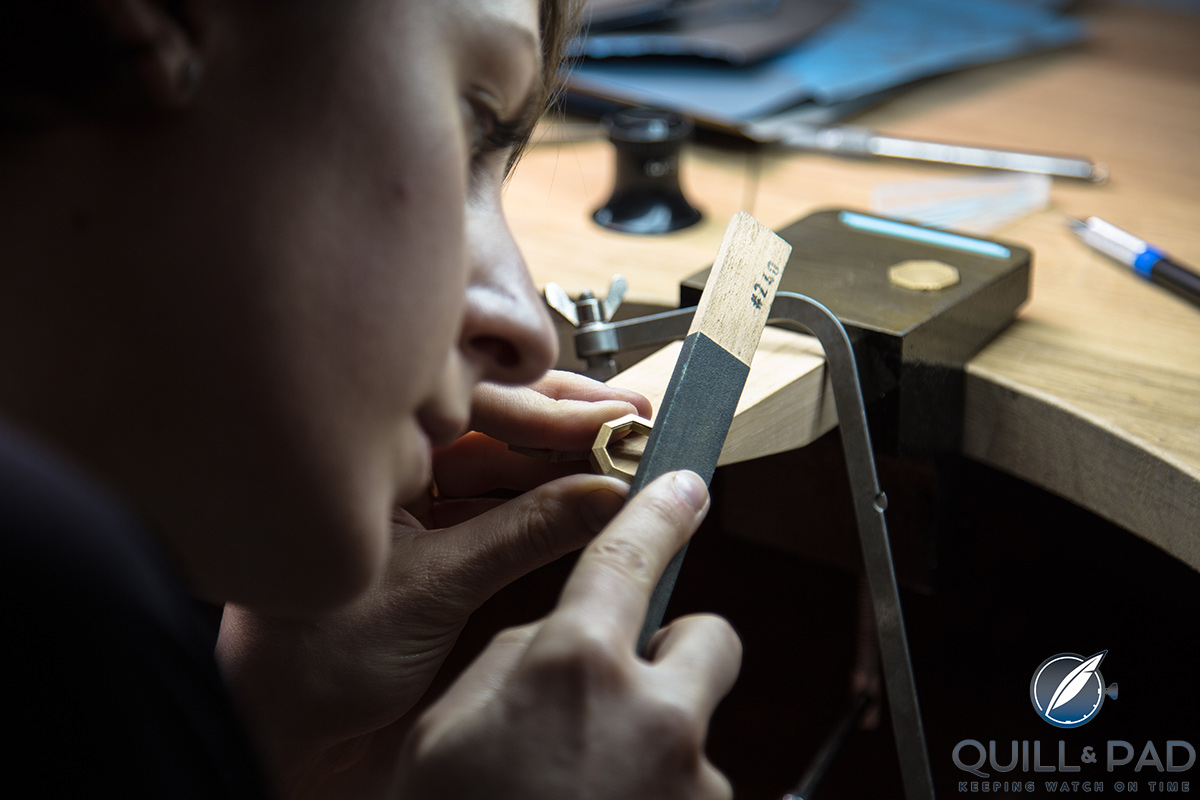
Rebecca Struthers files a Kelso case (photo courtesy Georgina Cook)
“In essence, it’s a one-hundred- year-old movement with some slightly contemporary additions,” Craig again interjects. “It’s nothing exciting, it needs to run.”
I don’t believe for one instant that it won’t be anything exciting, and I for one will be very excited to see it.
For more information, please visit www.struthers-london.co.uk.
Quick Facts: Rebecca Struthers’s qualifications
Doctorate in antiquarian horology (2017)
Postgraduate certificate in research practice (2014)
Master’s degree in history of art and design (2012)
Gemology diploma DGA (2009)
British Horological Institute watchmaker training (2008)
HND Horology, Birmingham City University (2008)
BTEC ND (BA extended diploma) Jewelry and Silversmithing, Birmingham City University (2005)
